The brief
Archive material is required for War Widows, a (fictitious) 50-minute documentary to air on Channel 4. The lives of the soldiers on battlefields around the world have long been documented; but what is it like for those permanently left behind? War widows are, all too sadly, an inevitability of war. This is their story.
Colour archive material from the Pacific War during the Second World War, the Falklands War, the first Gulf War and the invasion of Iraq in 2003 will be interwoven with interviews with those whose loved ones, tragically, did not return from the front line. The film will feature candid interviews with several war widows. Of particular poignancy is footage shared with us by a young widow: a video message posted by her husband on YouTube the day before his death.
War Widows will air on C4 in a 9pm slot. The producers need 15 minutes of archive material spanning conflicts involving British soldiers from the Second World War through to the present day, for which they have allocated a budget of £10,000. This material must be cleared for transmission and two repeat transmissions on C4. Technical costs - for transfer to digital formats for example - are not expected to be included in this £10,000 budget.
Where to begin?
The starting point for any archive researcher is dictated by the role the production team expect archive material to play. Material gathered for a programme in which archive content is used for generic illustration, for example, can be gathered faster and more cheaply than if archive footage is more central to the programme.
“It’s a complex process - a result of co-operation between producer/director and archive researcher/producer/consultant,” explains archive producer Angela Spindler-Brown, whose credits include Classic Britannia and Comet Tails and Satellite Story. “Archive footage gives another dimension to the programme but can also inspire and provide leads for the documentary, such as new witnesses or locations.”
It’s essential to clarify up front what visual and narrative style, and focus, the doc will have, says Alex Cowan, archive researcher on Hamburg Cell and Invading Iraq. “Do they intend to use dramatic reconstruction and do they want archive to match?” he asks. “Are they prepared to compromise their budget to obtain unique material?” Such decisions have a profound impact on how an archive budget is best spent.
If you source content solely from specialised commercial libraries - such as British Movietone and British Pathe - for an initial transmission and two repeats on C4, Spindler-Brown estimates a budget of £10,000 would buy you eight minutes of material at around £20 per second. By contrast you could acquire more than 22 minutes of material from a broadcast archive - such as Associated Press (AP) or BBC Motion Gallery - at an average cost of £450 per minute for unlimited transmissions over five years.
Public domain content, that is material produced by US government agencies which is not subject to the usual licensing restrictions, meanwhile, could be cheaper as only library and technical costs are payable, although it is available only from a limited number of sources, such as Footage Farm, a London-based archive, the US National Archives or Library of Congress.
Sourcing content
Archive researcher Declan Smith, whose credits include Seven Ages of Rock and Marvels of the Modern Age, proposes a two-phased attack on the War Widows brief: the first involving a trawl for general footage, the second targeting specialist collections to access footage of specific conflicts.
Smith highlights that the website for Focal International (www.focalint.org) which represents audio-visual libraries provides a useful listing of the most important archives. Meanwhile, a number of these archives - notably ITN - provide a comprehensive range of compilations which can provide a useful starting point.
Existing programmes can offer useful shortcuts, although Smith sounds a note of caution: “ITV/TWI’s Japan’s War in Colour and Britain at War in Colour are tempting [sources] but because they are big budget productions researched over long periods of time, footage is likely to have come from lots of different sources and a single shot sequence might have half a dozen separate copyrights in it.”
According to Smith, this means it is essential to have a detailed knowledge of respective royalty/copyright costs associated with different suppliers.
Material covering specific conflicts is available from specialist collections including those held by the Imperial War Museum although, with much of this available only on film, transfer costs are an important consideration. The British Defence Film Library is another important - and, at times, overlooked - source.
Meanwhile, an array of news footage from more recent conflicts shot by overseas networks - US broadcasters especially - can be licensed through a number of UK archives: ABC material, for example, is available through AP.
Cowan points out that modern material post-1990 is also held by the MoD and the separate media arms of the RAF, Army, Royal Marines and Navy. Alternatively, public domain (PD) footage can be a cost-effective source of archive content. “There may be some useful material on war in the Pacific originating in the US National Archives,” says Smith. “But remember, this is shot by US military. The best starting point for a project like this would be Footage Farm, a London-based archive which supplies PD footage at cost price - a per reel rate starting at £200.”
Knowing where to locate archive material is one thing, getting the best price is another. All of the researchers contacted agree that volume deals on paid-for content are available. Even so, securing the best terms in any licence agreement is a complex process. Spindler-Brown points out: “Every archive sells material in a different way. Definitions of territories, the duration for which material is licensed and the minimum duration charged for (20 seconds or one minute) vary.”
Personal material
Personal material such as videotapes and photos would be another important - and cost effective - source to consider. This could be tracked down from interviewees already secured for the programme, or via adverts in regimental magazines or postings on websites, such as the British Legion’s. Another possible route is via the British Film Institute and regional film archives to which the families of many former soldiers bequeath personal material associated with their relatives’ wartime experiences.
When a soldier’s personal material is held by a war widow and her family, it’s vital to ensure that it is returned safely, Cowan stresses. “Since military widows in the UK are relatively poorly provided for, a £250 payment per minute of material used seems reasonable,” he adds.
Similarly, adds Cowan, it’s important to deal sensitively with families if you’re seeking to feature any video posted on sites such as YouTube by soldiers in action, especially if the soldier was then killed. And to cover yourself you’d need to contact the commissioning broadcaster and its lawyers before production to check their position on using material obtained this way.
According to Smith, the best approach to handling material created by service personnel and posted on YouTube would be to copy the clip onto tape as early as possible then add a special clause into the interviewee release form, giving clearance from the family to use the clip.
Budget
The biggest issue with any archive research job is - and will always be - the budget. With budgets tighter than ever, it’s important to assess and agree your precise archive requirements as early in pre-production as possible, says Smith, as once production gets underway there is little leeway for wasted research or acquisition.
Although a number of archives - ITN’s, for example - are searchable online, a combination of desktop research, direct contact, personal visits, phone research or press advertising would be required to secure the best available material. All of which makes archive research a time-consuming and costly process.
“Today, most broadcast and commercial archives have the majority of their material digitised and available on the web,” says Spindler-Brown, who believes that the cost of archive footage - research, technical and licence fees - is often underestimated in budgets prepared for documentaries. “Small archives within broadcasting organisations and commercial ones that aren’t digitised often have the most interesting material in their vaults.”
Other issues
Everybody featured in personal archive material - including that sourced from within news footage - has to be approached and a release form produced, Cowan points outs. Clearing personal material already included in news broadcasts can be difficult as contact information is often out of date, or incomplete.
The poor quality of home movie material - especially internet-only or mobile phone content - is generally accepted by audiences nowadays. Some people in personal footage, meanwhile, may wish to have their faces blurred. When it comes to the availability of colour footage relating to older conflicts, however, commissioners’ expectations must be carefully managed so they are realistic.
Colour film of British forces during the Second World War, Korea and Malaysia conflicts is very rare and usually amateur, Cowan says. Programme-makers should remember that it was mainly US forces that were shot in colour in the later years of the Second World War. If the doc has been sold with the promise of a wealth of previously unseen colour in footage from this era, he adds, commissioners will be disappointed.
With many thanks to Focal International, which put us in touch with the researchers, and Darlow Smithson, which advised us on the brief.
One solution to the brief
ARCHIVE CONTENT
15 minutes’ archive at £533 p/minute (max) broken down as follows:
7 mins ITN £3,150
2 mins Imperial War Museum £1,680
3 mins personal £750
(some provided for free)
1 min British Defence Film Library £840
1 min Ministry of Defence £800
Total footage licensing spend: £7,220
Stills licensing £1,000
Archive viewing tape costs £500
Dubbing: Assume to Digibeta dubbing costs of 1.5 hours Telecine @ £210 p/hr = £305/two hours Digi to Digi £160 p/hr = £320
*Supply blank stock to facilities house for slight saving so cost of stock on top of total £625*
Contingency £655
Total £10,000
Archive researcher’s fee and technical costs - eg, transfer costs - are in addition to the
£10,000 budget










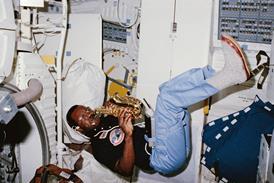
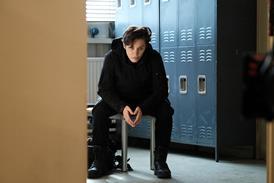
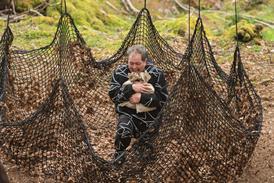

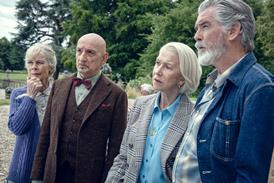






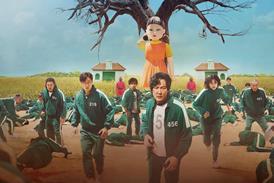
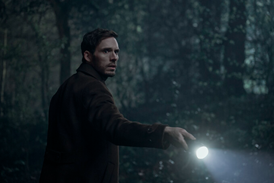



No comments yet